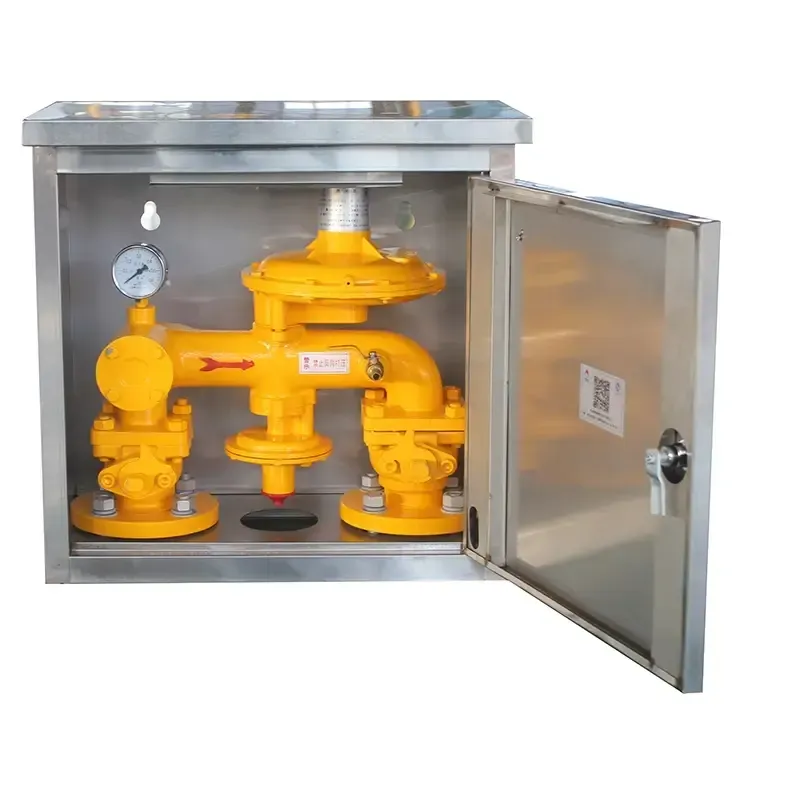
Dec . 13, 2024 23:33
Back to list
Understanding Pressure Regulation Devices for Effective Fluid Management in Industrial Applications
Understanding Pressure Regulating Devices Mechanisms and Applications
Pressure regulating devices are critical components in various industrial and domestic applications, controlling the pressure of fluids and gases to ensure safety and efficiency. These devices serve to maintain the desired pressure levels within a system, mitigating the risks associated with pressure fluctuations that can lead to equipment failure or hazardous situations.
What Are Pressure Regulating Devices?
Pressure regulating devices, commonly referred to as pressure regulators, are mechanical devices designed to maintain a constant output pressure regardless of variations in input pressure or flow rate. They are essential in systems such as gas pipelines, water distribution networks, and heating systems, where maintaining specific pressure levels is crucial for effective operation.
How Do They Work?
Pressure regulators function based on a feedback mechanism. They usually consist of several key components a sensing element, a diaphragm, and an adjustable spring. The sensing element detects the output pressure, and if it deviates from a preset level, the diaphragm moves in response, adjusting the flow of the input fluid or gas accordingly. The adjustable spring sets the desired pressure level, allowing for customization based on specific system requirements.
One common type of pressure regulator is the pneumatic regulator, which is often used in compressed air systems. These regulators allow for the control of air pressure delivered to pneumatic tools and equipment, ensuring they operate within safe and efficient parameters. Similarly, gas regulators are used in residential and commercial settings to control the flow of natural gas, preventing dangerous over-pressurization that could lead to leaks or explosions.
Applications of Pressure Regulating Devices
pressure regulating device

Pressure regulating devices have a wide range of applications across various sectors
1. Industrial Manufacturing In manufacturing processes, maintaining consistent pressure is essential for machinery that relies on pneumatic systems. Pressure regulators help optimize performance and prevent equipment damage due to pressure surges.
2. HVAC Systems In heating, ventilation, and air conditioning systems, pressure regulators maintain the appropriate pressure needed for proper airflow and system efficiency, contributing to energy savings and prolonging equipment life.
3. Water Supply Systems Municipal water systems use pressure regulating devices to ensure that water pressure is kept within safe limits for residential and commercial customers. This prevents damage to pipes and fixtures and ensures adequate water flow.
4. Medical Equipment In the healthcare industry, pressure regulators ensure that gases delivered via medical devices—such as oxygen tanks—maintain safe and consistent pressures for patient treatment.
5. Aerospace and Automotive In both aerospace and automotive sectors, pressure regulators are crucial for managing fuel and hydraulic systems, ensuring safe and reliable operation of vehicles and aircraft.
Conclusion
In summary, pressure regulating devices play an indispensable role in modern technology, ensuring the safety, efficiency, and reliability of various systems. Their ability to maintain a stable output pressure in the face of fluctuating input conditions makes them vital components across numerous industries. As technology continues to advance, the design and capability of these devices are likely to evolve, further enhancing their performance and application in complex systems. Whether in everyday household functions or high-stakes industrial environments, pressure regulators remain a cornerstone of engineering solutions that prioritize both safety and efficiency.
Latest news
-
Safety Valve Spring-Loaded Design Overpressure ProtectionNewsJul.25,2025
-
Precision Voltage Regulator AC5 Accuracy Grade PerformanceNewsJul.25,2025
-
Natural Gas Pressure Regulating Skid Industrial Pipeline ApplicationsNewsJul.25,2025
-
Natural Gas Filter Stainless Steel Mesh Element DesignNewsJul.25,2025
-
Gas Pressure Regulator Valve Direct-Acting Spring-Loaded DesignNewsJul.25,2025
-
Decompression Equipment Multi-Stage Heat Exchange System DesignNewsJul.25,2025

